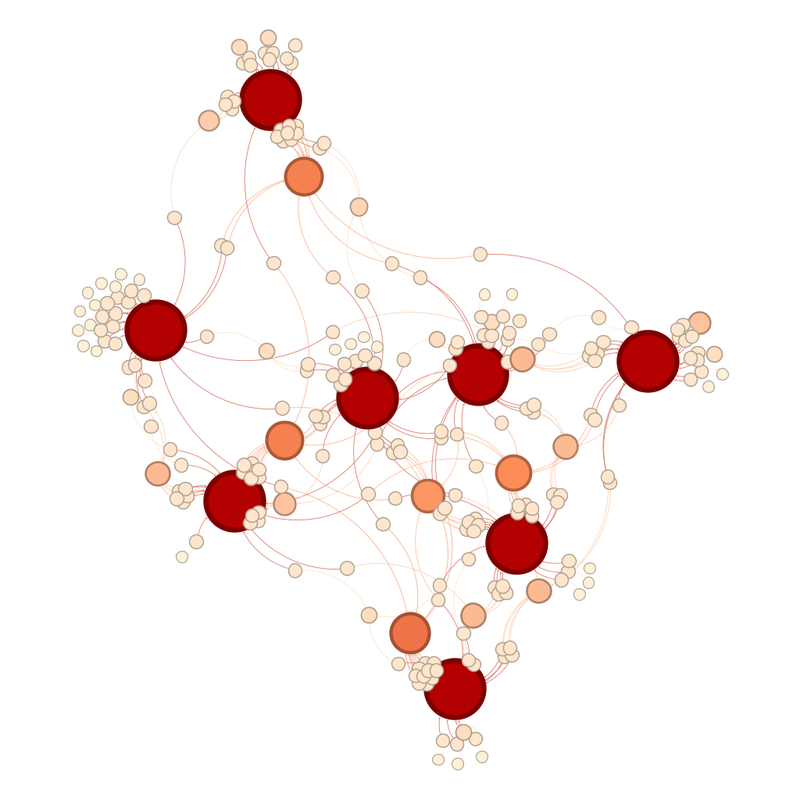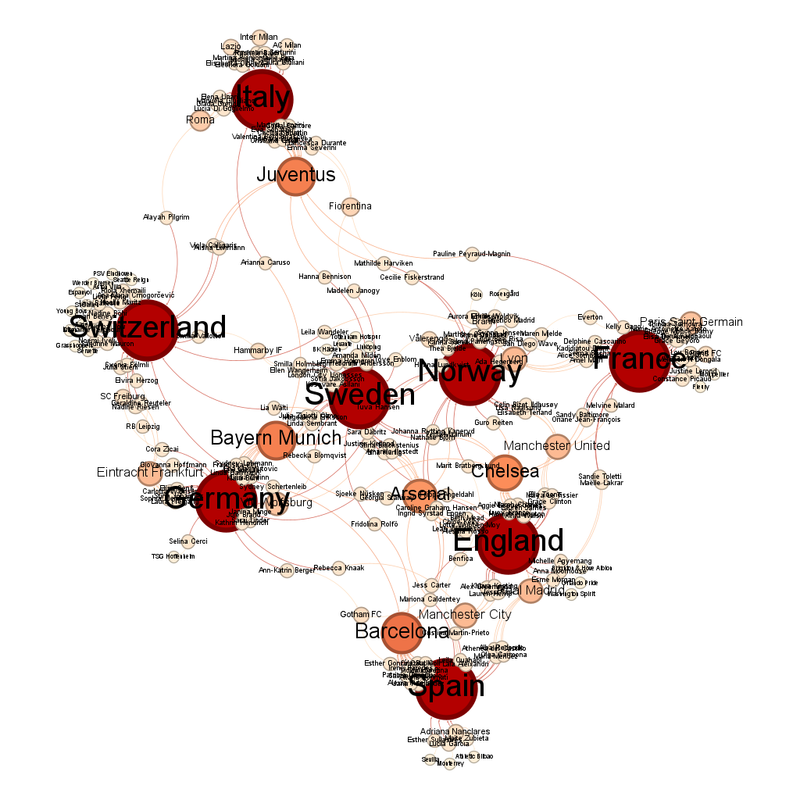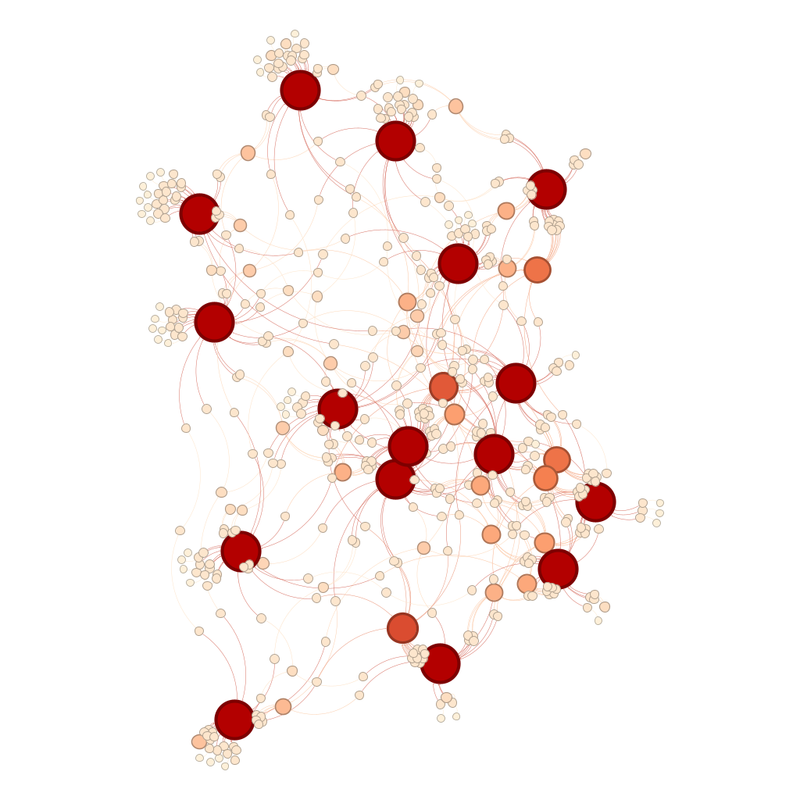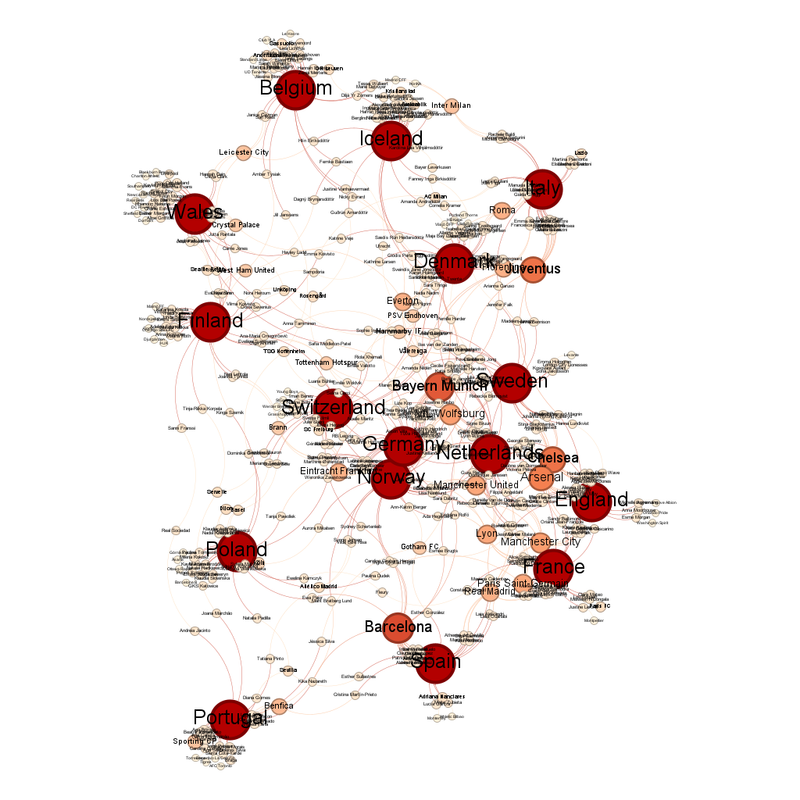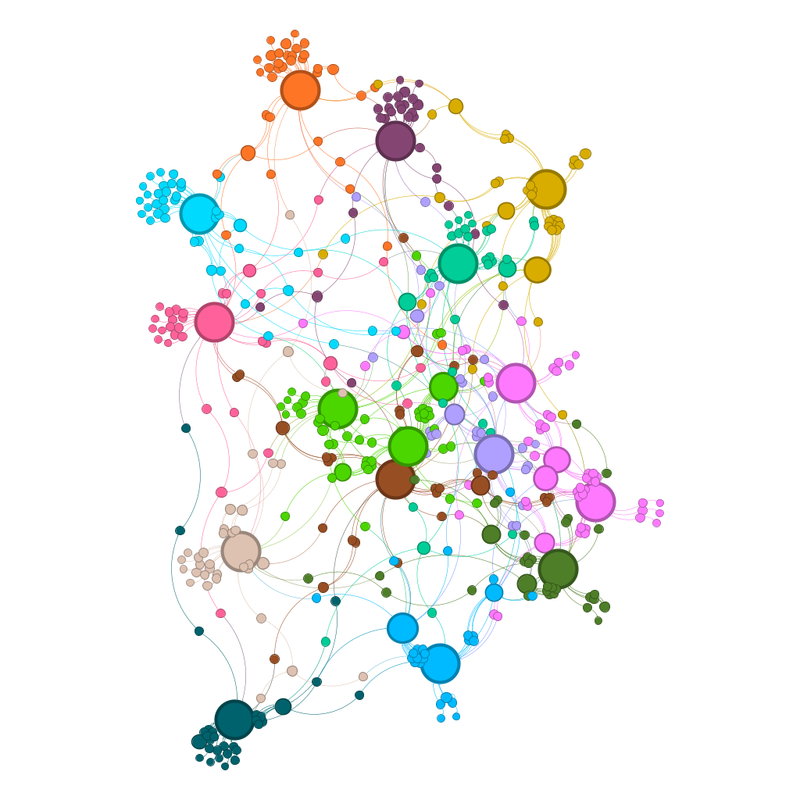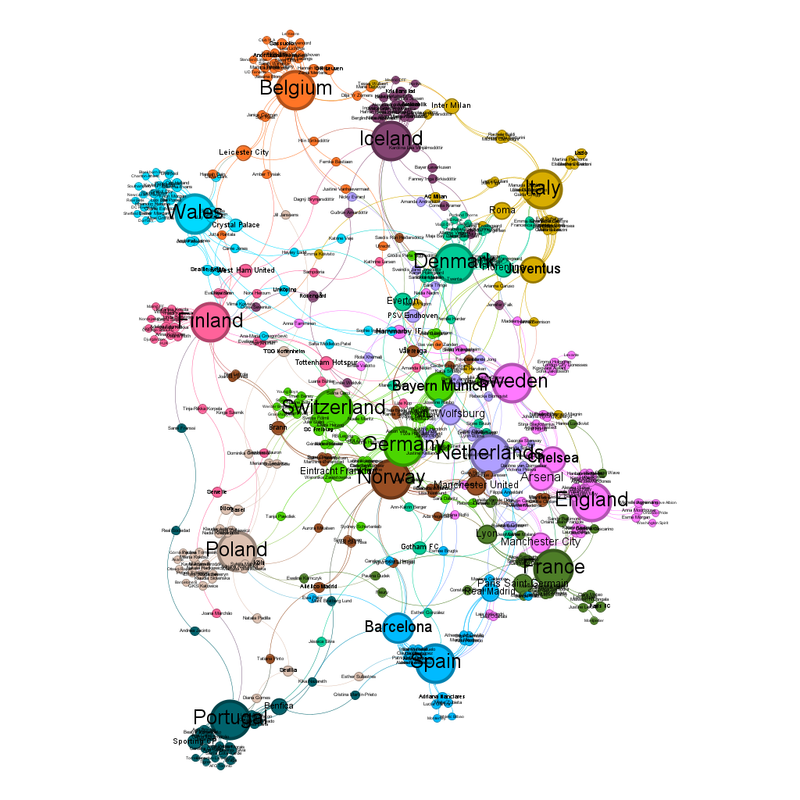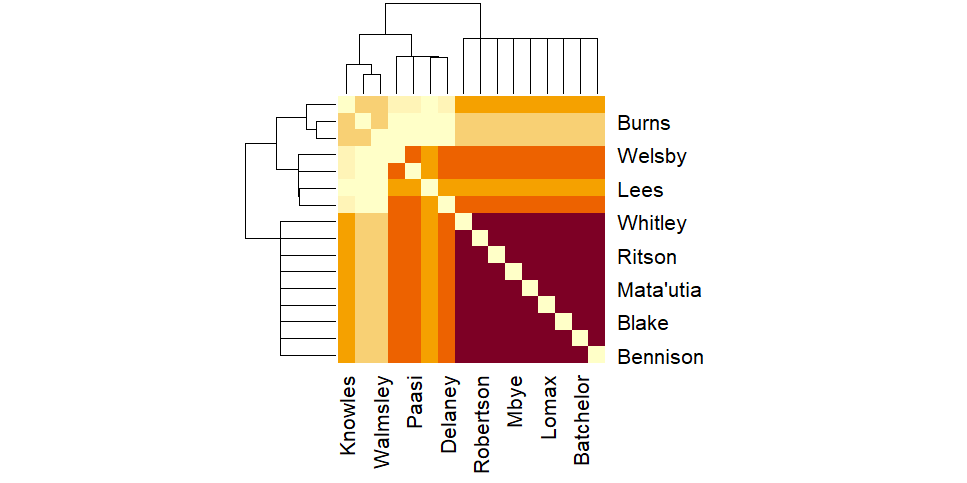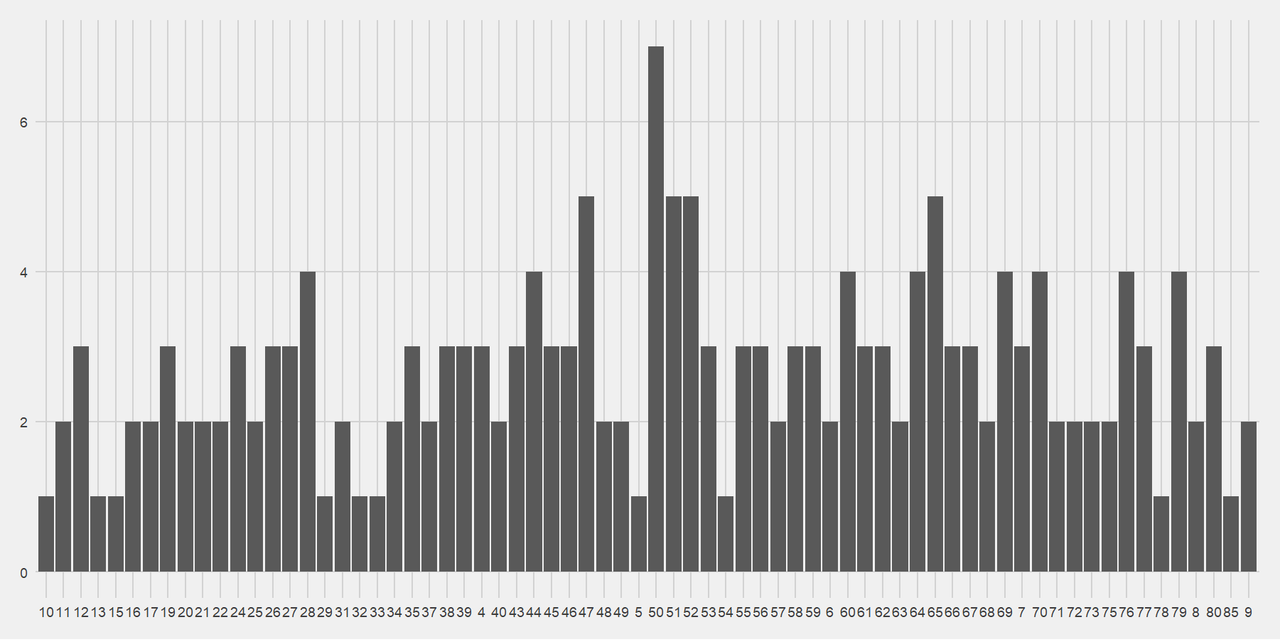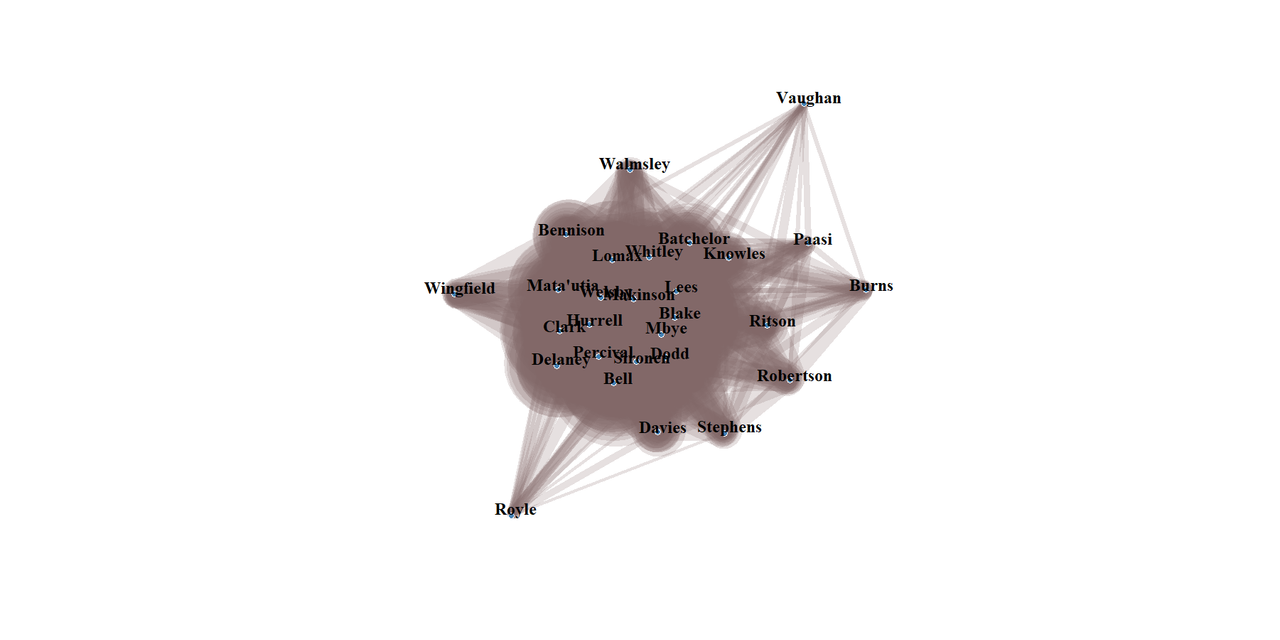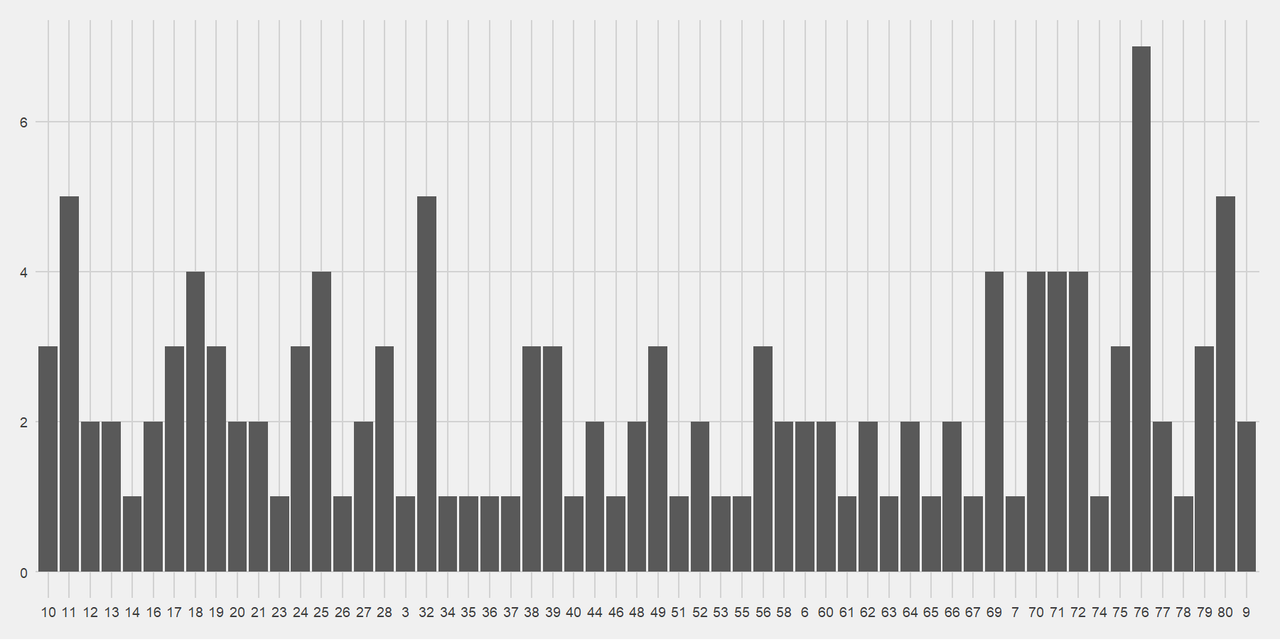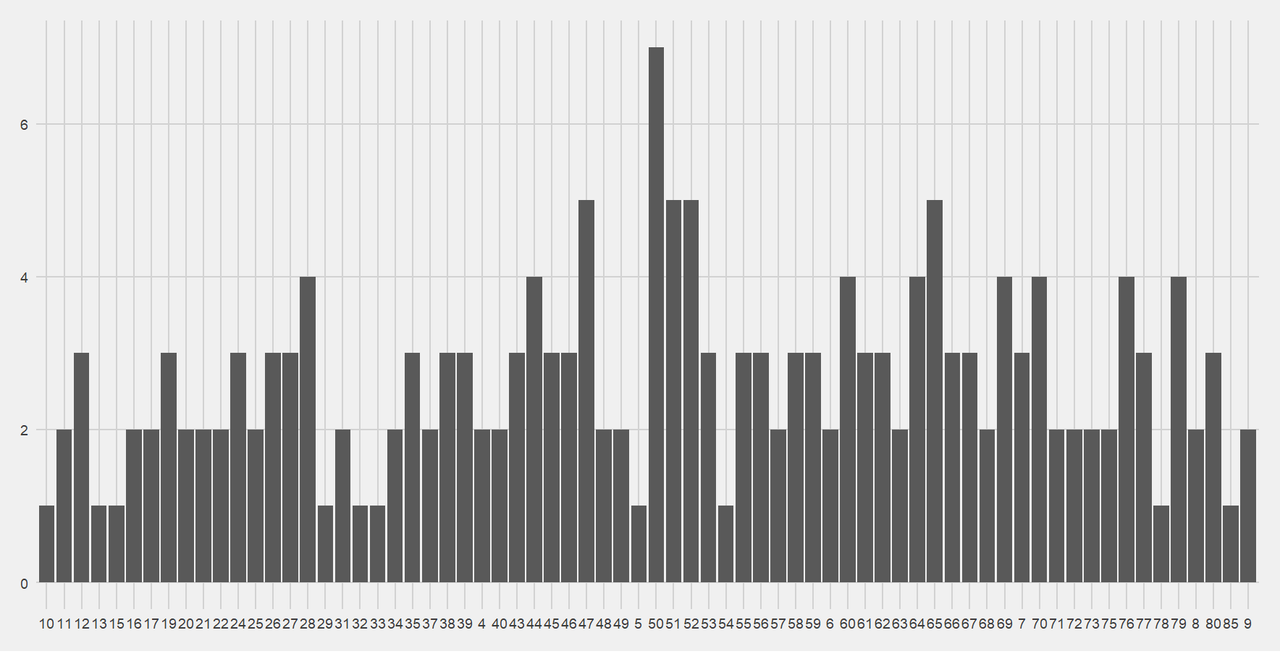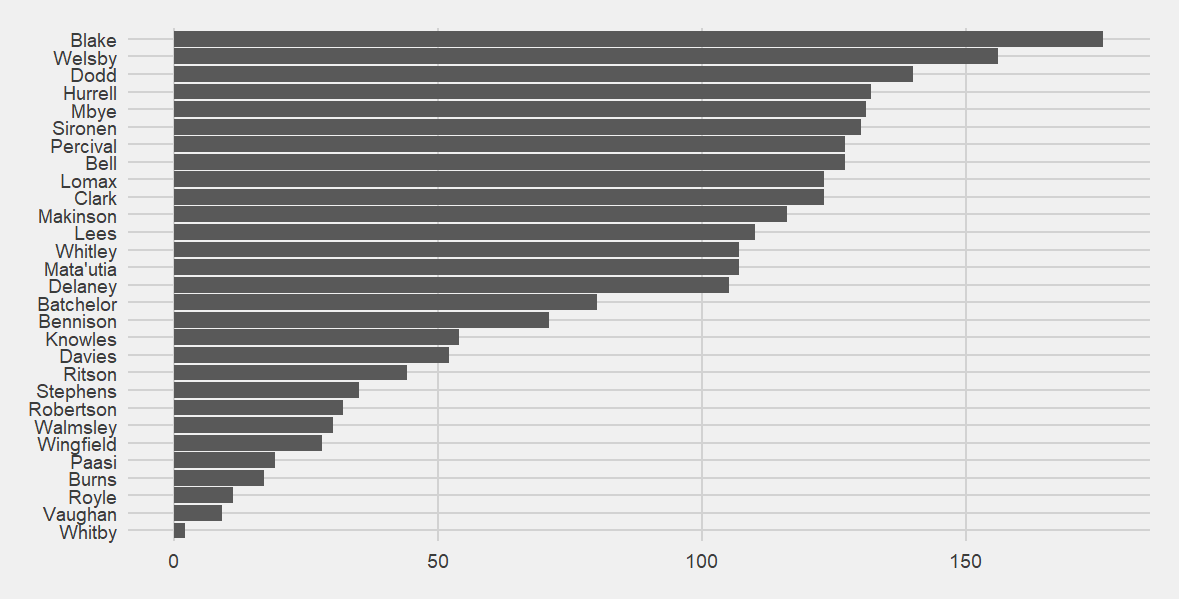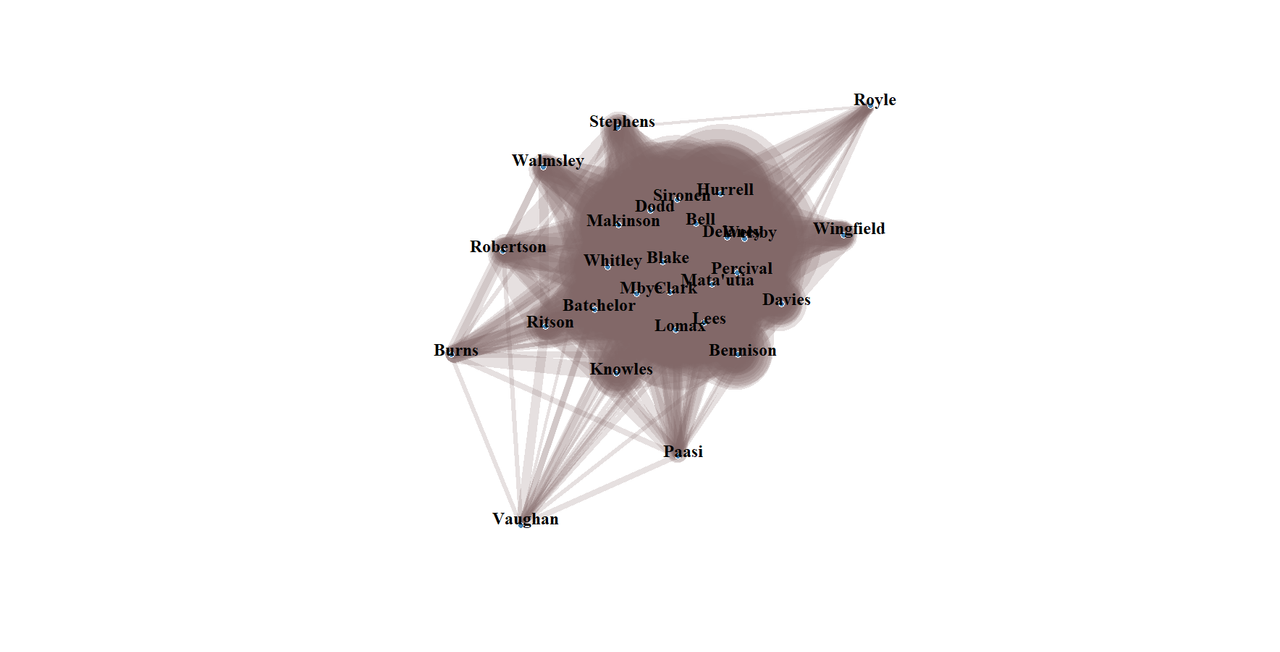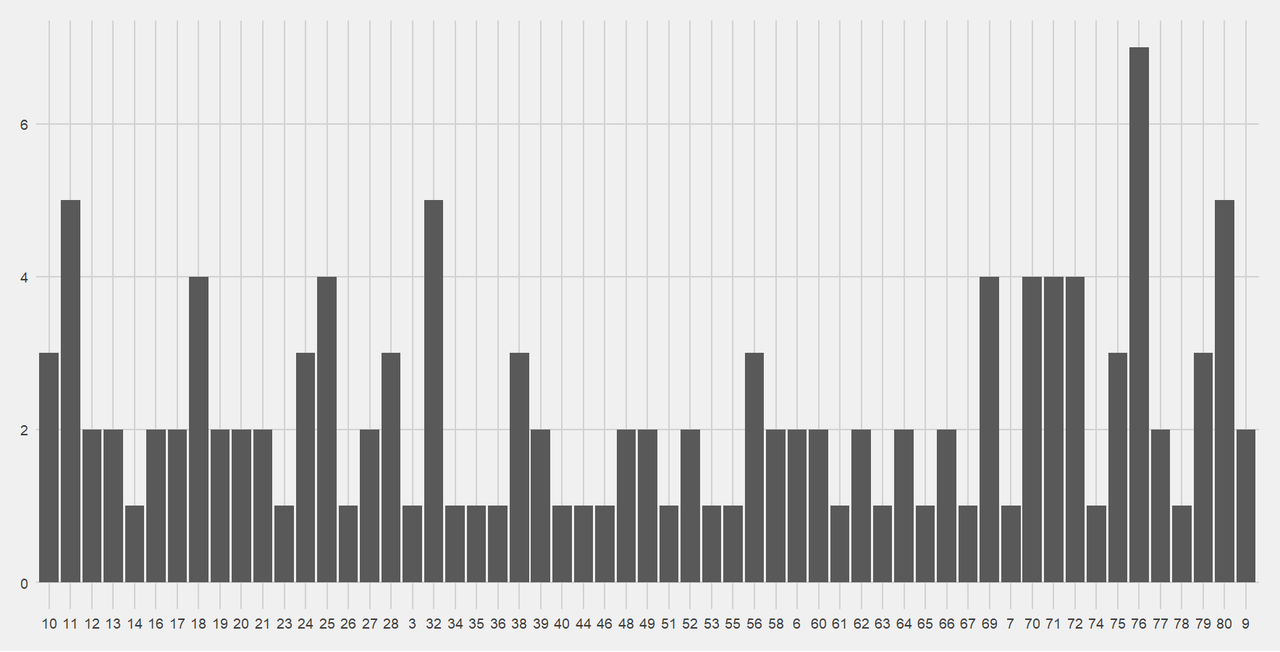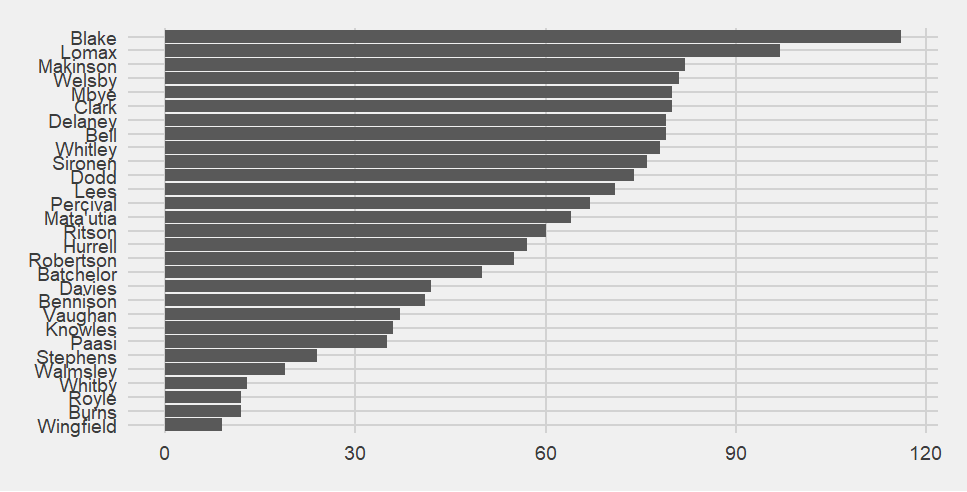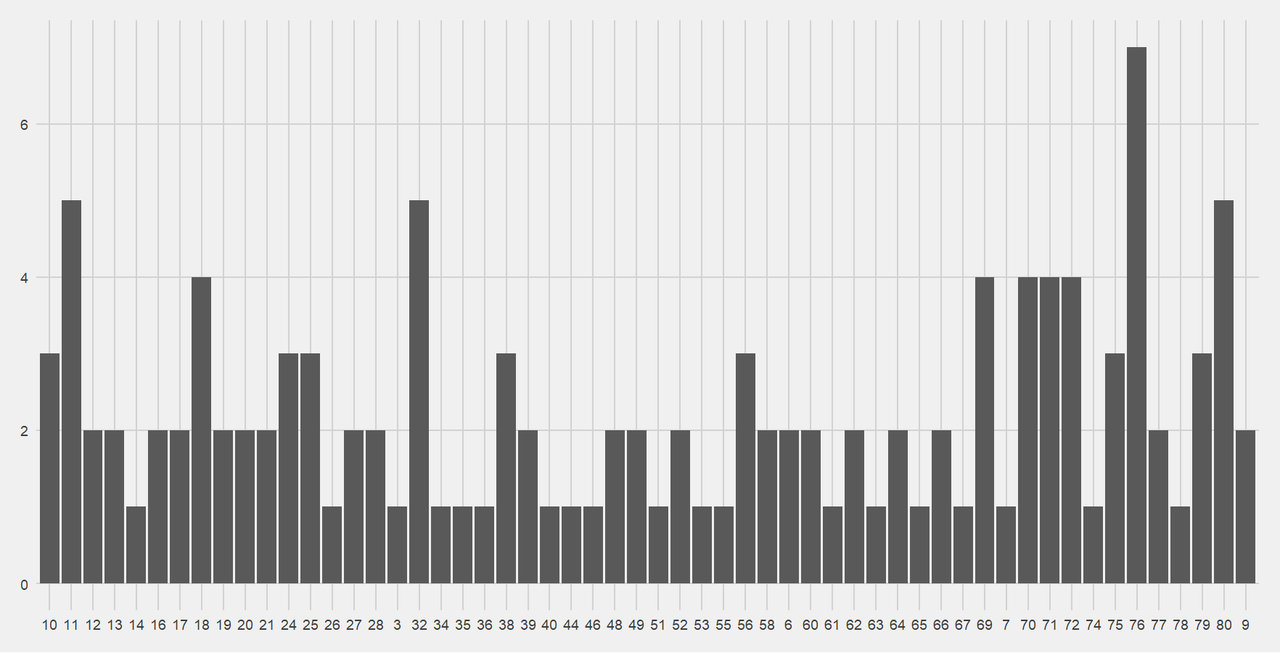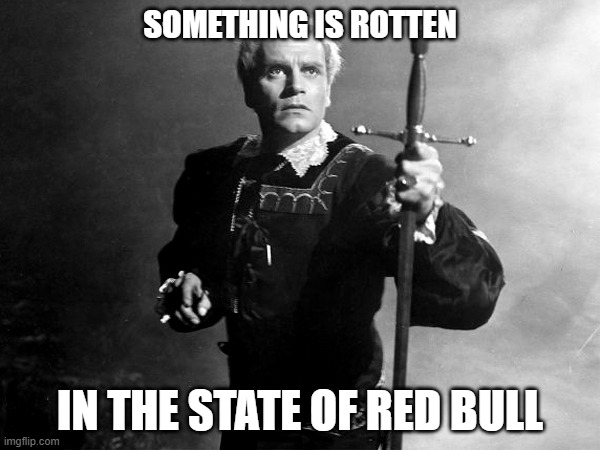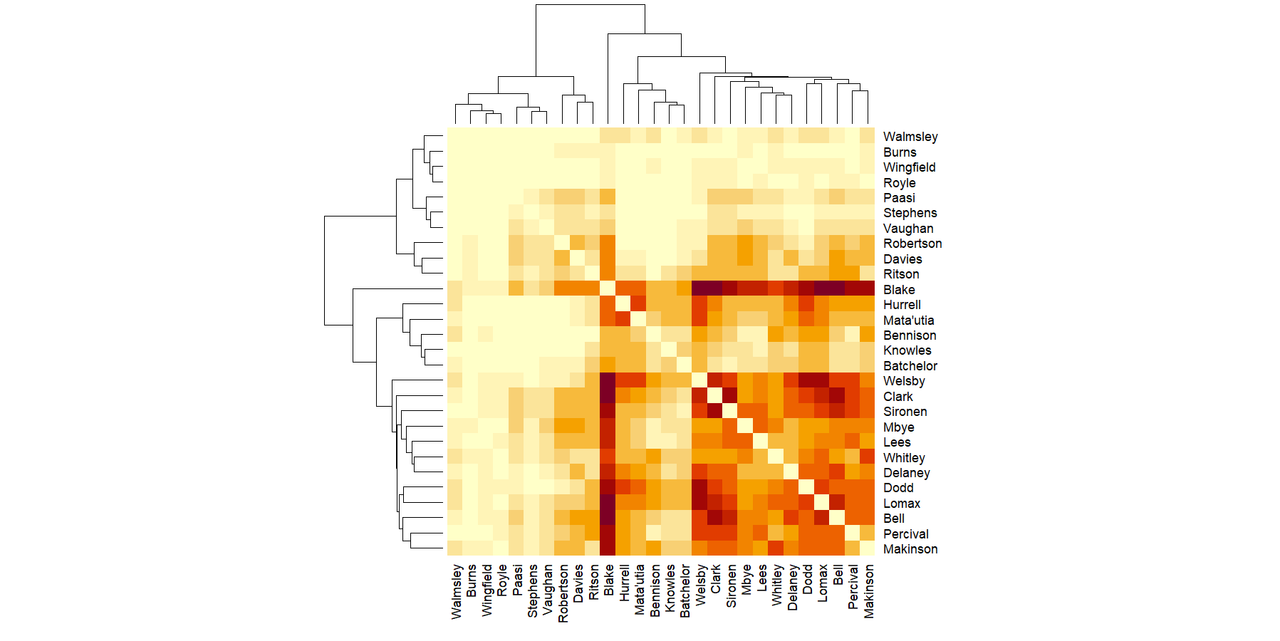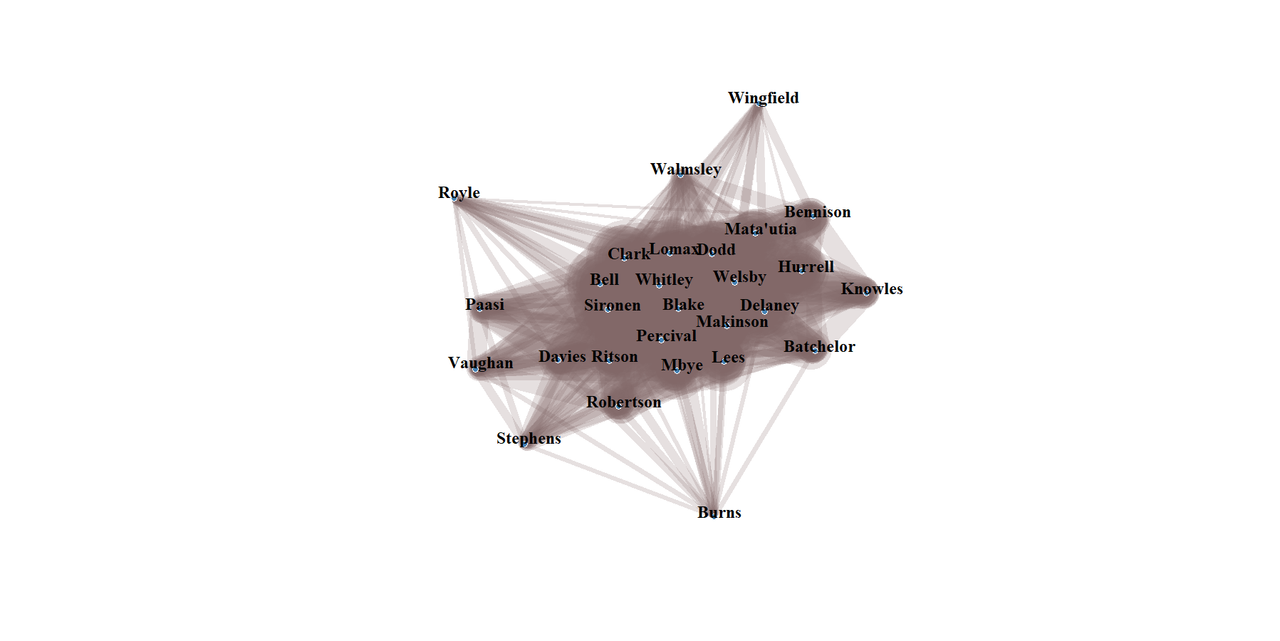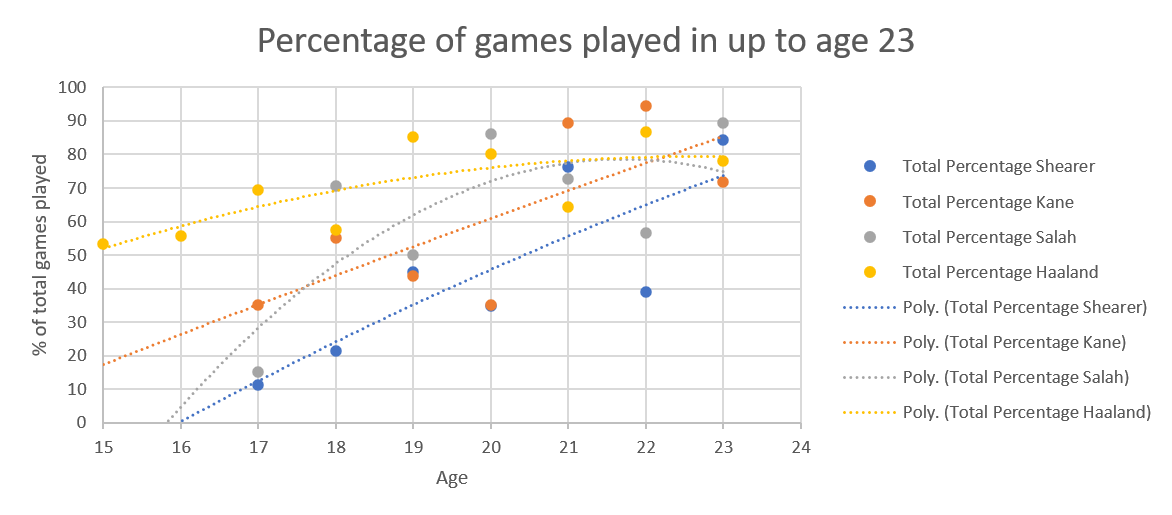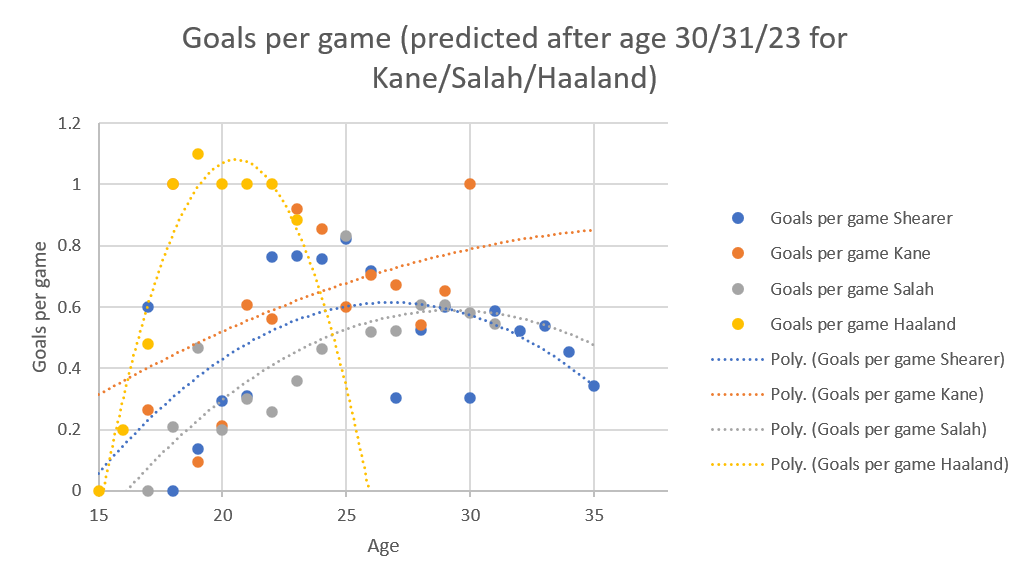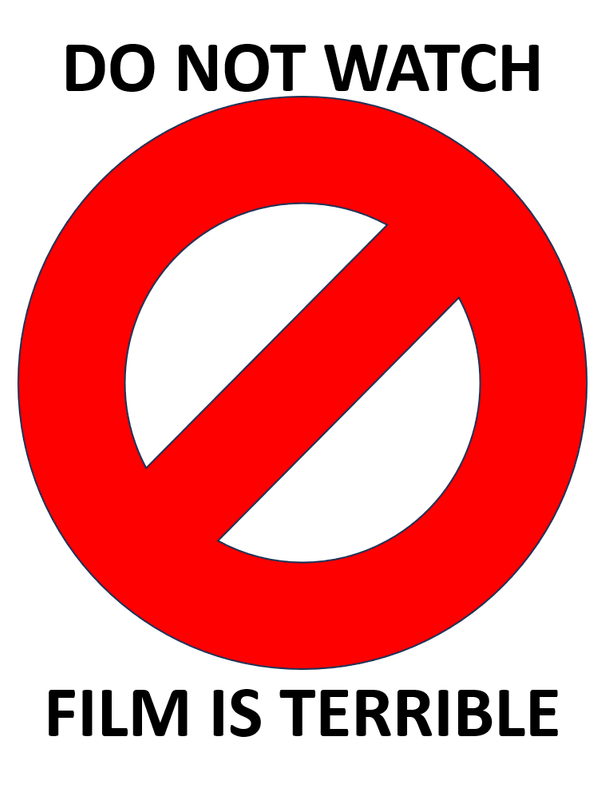
Wednesday, 16 July 2025
Film Review - Ad Astra

Monday, 14 July 2025
Euro 2025 - Quarterfinal network diagrams
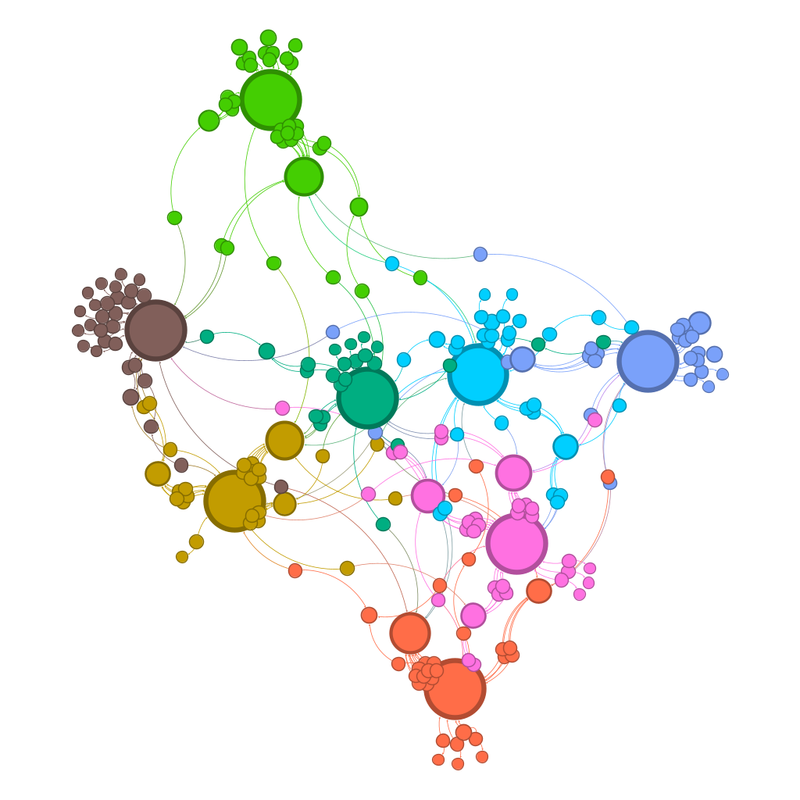
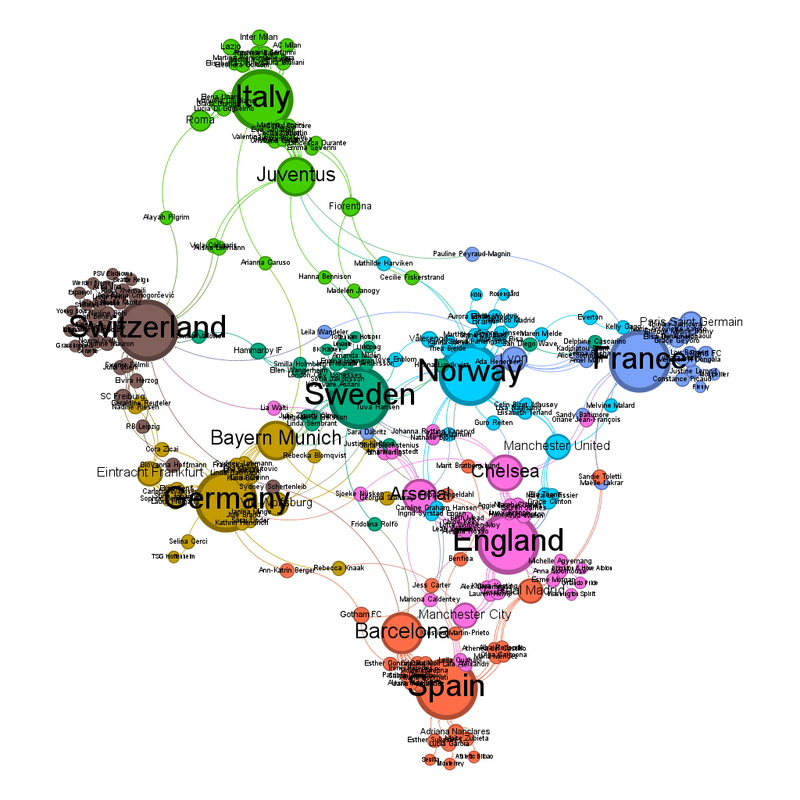
Wednesday, 9 July 2025
Formula 1 2025 - British Grand Prix
Sunday, 6 July 2025
Film Review - Time Bandits
D took me to the Mockingbird Cinema (https://mockingbirdcinema.com/MockingbirdCinema.dll/Home) because, as an indie cinema, they reshow older films sometimes.
I had seen Time Bandits before, but never in the right order. As you can imagine, it has a very different effect in the right order - it works better, despite it very much being Terry Gilliam doing the child hero's journey.And ending it very Gilliamly. (Which I define as an ending that is sort of, if not unhappy, then lacking in comfort. I think that might be the hallmark of his films, they provide no direct comforting message.)
But at least things look interesting. (I will forgive a lot for interesting)
Writing this has made me realise how difficult I find it to describe Terry Gilliam's films and my responses to them. They're very much experiences rather than a solid thing that can be described, or certainly not by me, who, I admit, comes from the science and sense end of things rather than humanities and sensibilities. I am happier with things that are and aren't, rather than -ish, but Gilliam's films are full of -ish and questions, but I like that about them. They're full of that feeling, without trying to explain everything, as opposed to some films that aim for that and then try to explain, and that never works for me. (Spoiling my review in advance, I think that's why I did not jive with 'Everything, Everywhere, All At Once'.)
Friday, 4 July 2025
Euro 2025 Network Diagrams - An Update
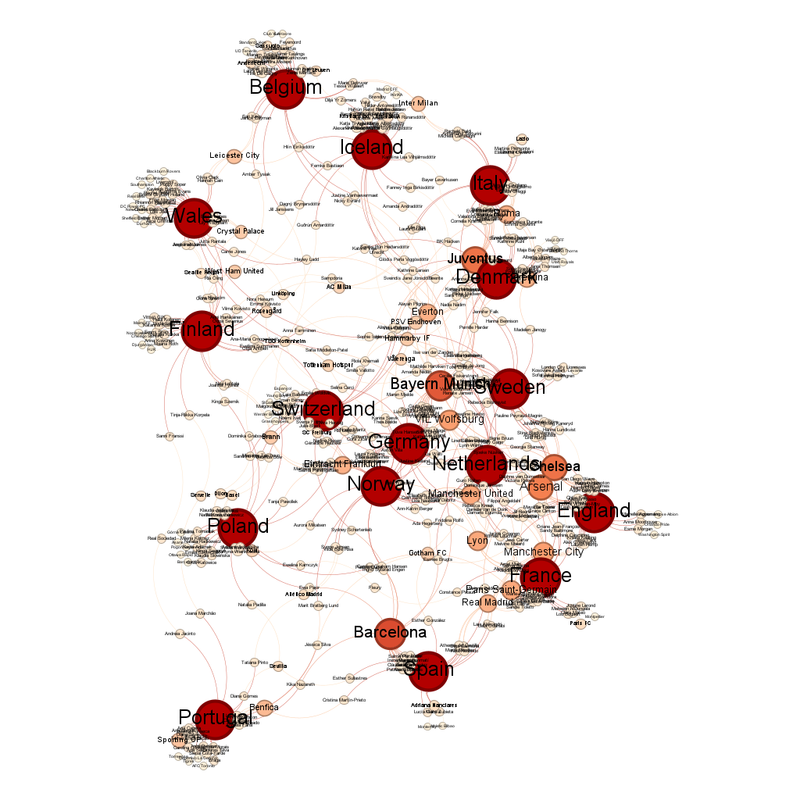
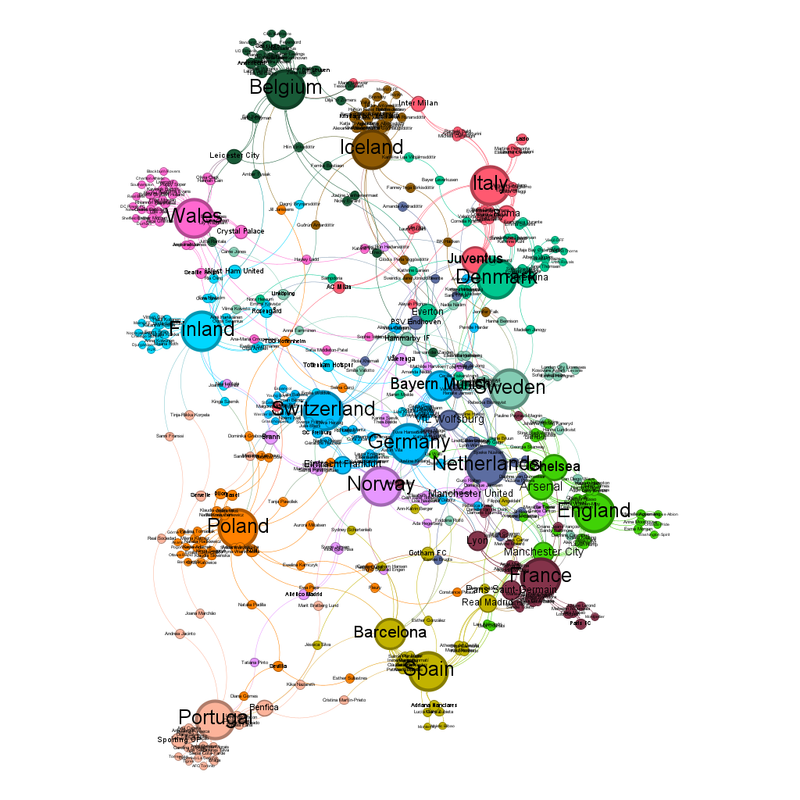
Wednesday, 2 July 2025
Formula 1 2025 - Austrian Grand Prix
The most important thing first - there was actual racing! Up and down the grid. Actual racing!!!
That was a good race.I feel so sorry for Williams. I have no idea what's causing everything to suddenly go wrong for them, but it's depressing. And slightly alarming when a car's brakes set on fire. I would suggest they borrow the exorcist Red Bull ought to hire for that second car. At this point, the reason for the poor performance of that second car being a curse makes as much sense as anything else, because both Tsunoda's performance when he was in the RB and Lawson's now he's in it, suggest that it isn't the driver (see also Albon in the Williams when it is not misbehaving).
On the happier side, well done Sauber! Hulkenbooooom happened again - 20th to 9th. Of course, it fits with the rest of his career that an 11 place rise up the grid doesn't get him driver of the day. But I can't be annoyed, because Bortoleto got his first ever points and F1 fans are as sentimental as the next group.
Ferrari!!! Have pace!!!
Repeat after me for the umpteenth time - I will not be optimistic about Ferrari's performance based on a single race.
I will not be optimistic about Ferrari's performance based on a single race.
(Now if only they could sort out the Hamilton and Leclerc to strategy team communication, because hilarious though it is to hear the drivers having mid-race strategy arguments, I don't think it's efficient.)
In the commentary, I managed to listen to this on BBC radio and then watch the Channel 4 highlights. Channel 4, occasionally home to Mark Webber in the comms box are mysteriously totally in Piastri's corner. Like serious, I'm wondering if they got a memo saying they ought not to make it obvious that as a British broadcaster they were going to cheer for the Brit and have gone too far the other way.
BBC meanwhile are trying to get rid of Tsunoda which makes me both sad and angry. You won't like me when I'm angry BBC comms team.
One thing I will give Channel 4 credit for - bonus Eric Bana who was being lovely and fannishly enthusiastic.
I do wish they'd put up the interview they had with Jonathan Wheatley afterwards. He's so lovely.
Sunday, 29 June 2025
Euro 2025 Network Diagrams
Tuesday, 24 June 2025
Saints Ahoy - Game 27 and the 2024 Season to Date
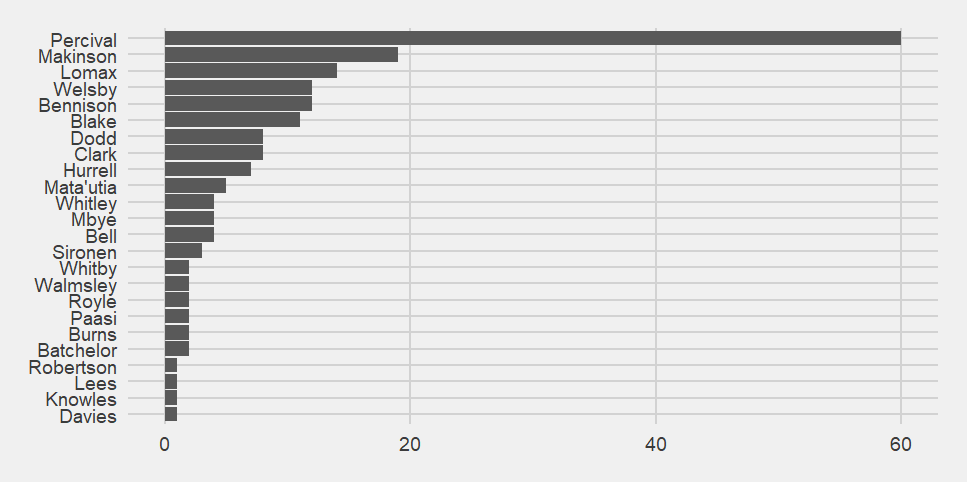
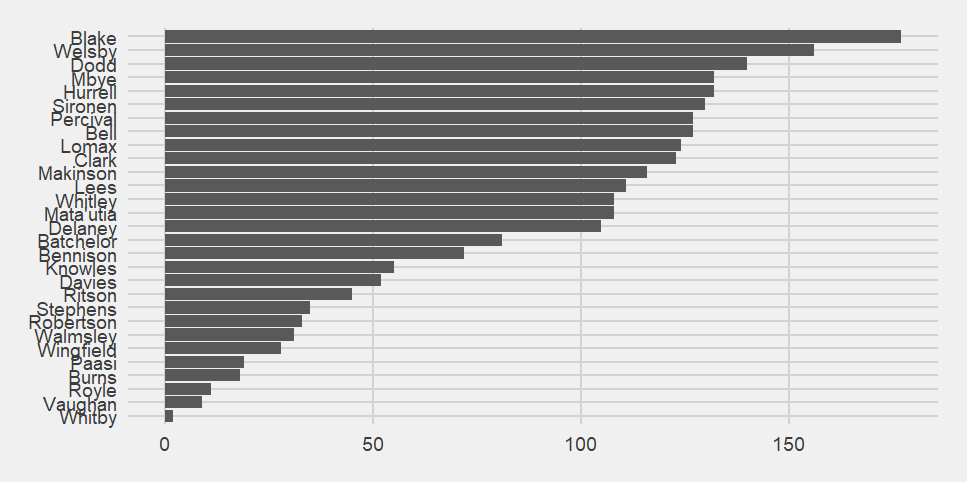
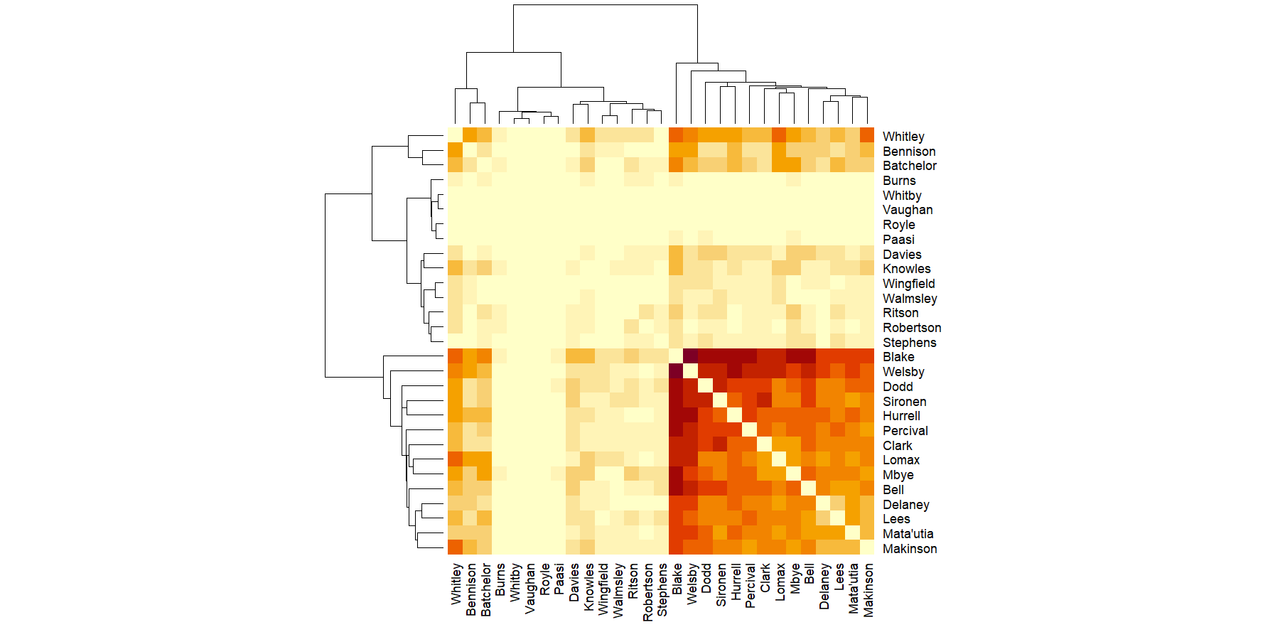
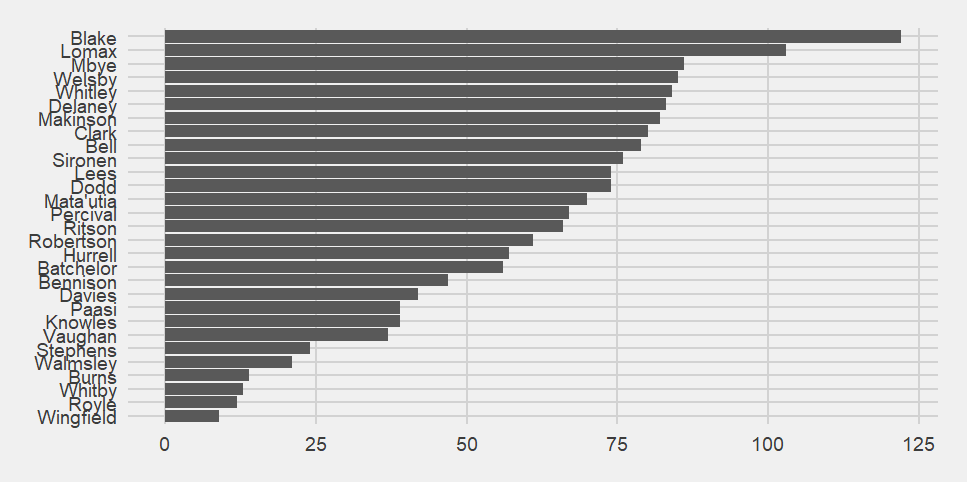
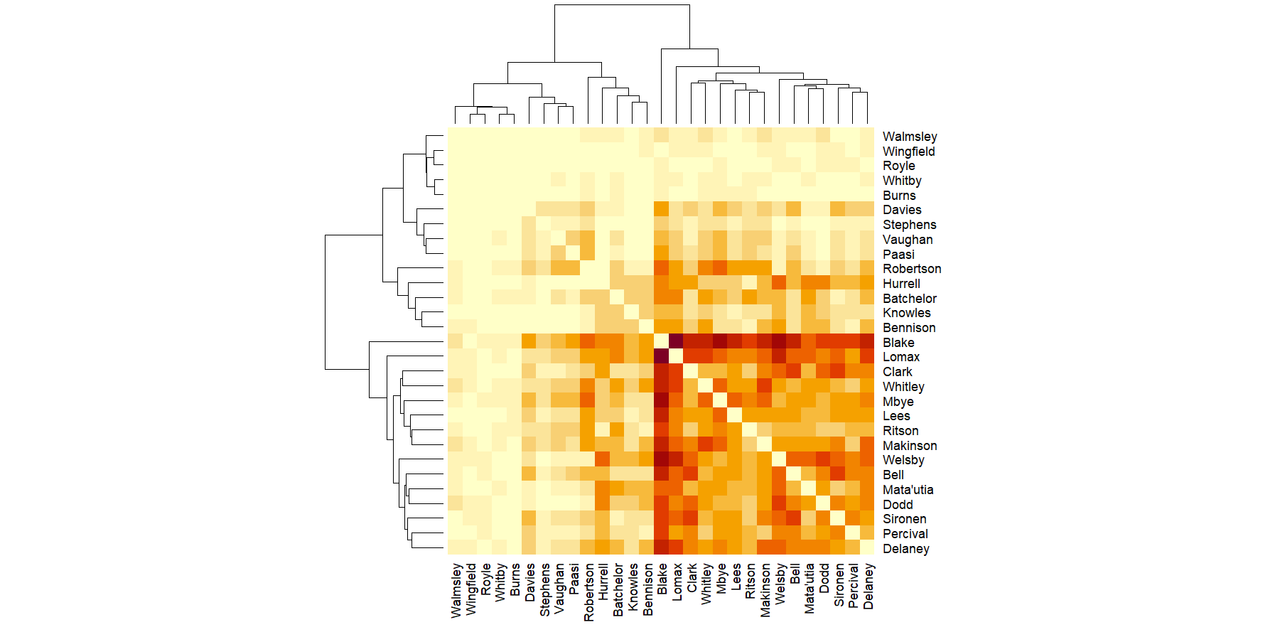 Another interesting this is that, although the shape is similar, some of the players have moved section e.g. Ritson has moved from the middle group to the darkest group, in just one game.
The network graph is the same shape but has shifted about 15 degrees clockwise. Last time I suggested that players were either being sucked into the centre or moving out. It was being sucked in because they're all much closer now.
Another interesting this is that, although the shape is similar, some of the players have moved section e.g. Ritson has moved from the middle group to the darkest group, in just one game.
The network graph is the same shape but has shifted about 15 degrees clockwise. Last time I suggested that players were either being sucked into the centre or moving out. It was being sucked in because they're all much closer now.
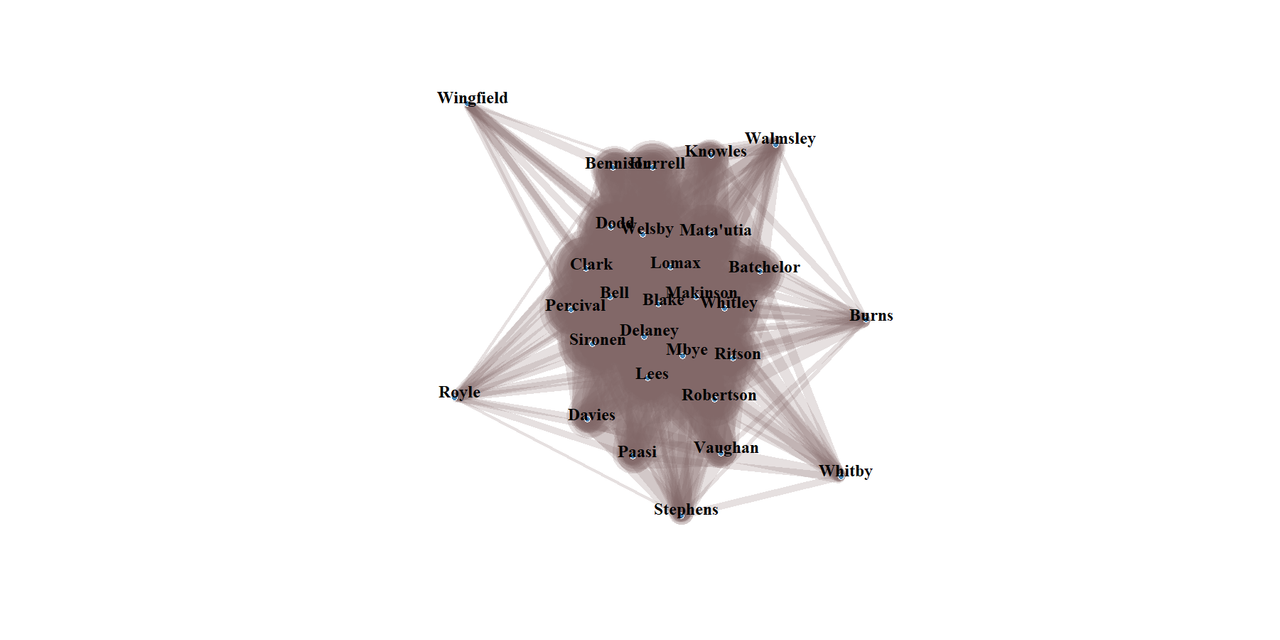
Wednesday, 18 June 2025
Saints Ahoy - Game 26 and the Season to Date
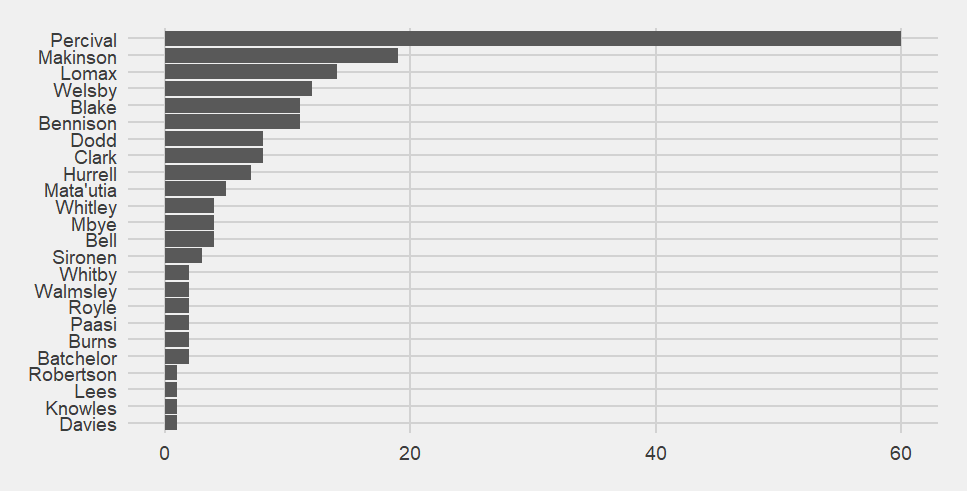
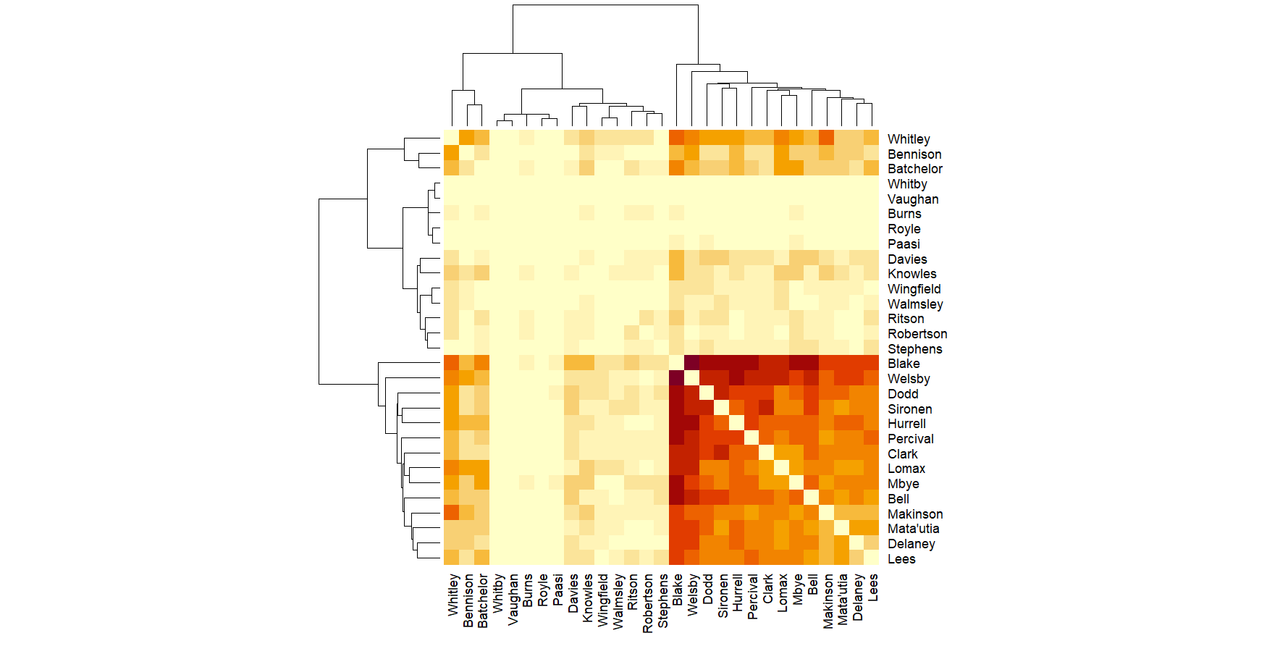 Normally it would go darkest (most often together) in the bottom right hand corner and paler (less often together) as it moves up and to the left.
This time, that pattern happens but then there's a suddenly dark border along the top and left which consists of Whitley, Bennison and Batchelor, suggesting Saints score when they are on the pitch together. The grouping makes some sort of sense because Batchelor definitely missed some matches with an injury.
Normally it would go darkest (most often together) in the bottom right hand corner and paler (less often together) as it moves up and to the left.
This time, that pattern happens but then there's a suddenly dark border along the top and left which consists of Whitley, Bennison and Batchelor, suggesting Saints score when they are on the pitch together. The grouping makes some sort of sense because Batchelor definitely missed some matches with an injury. 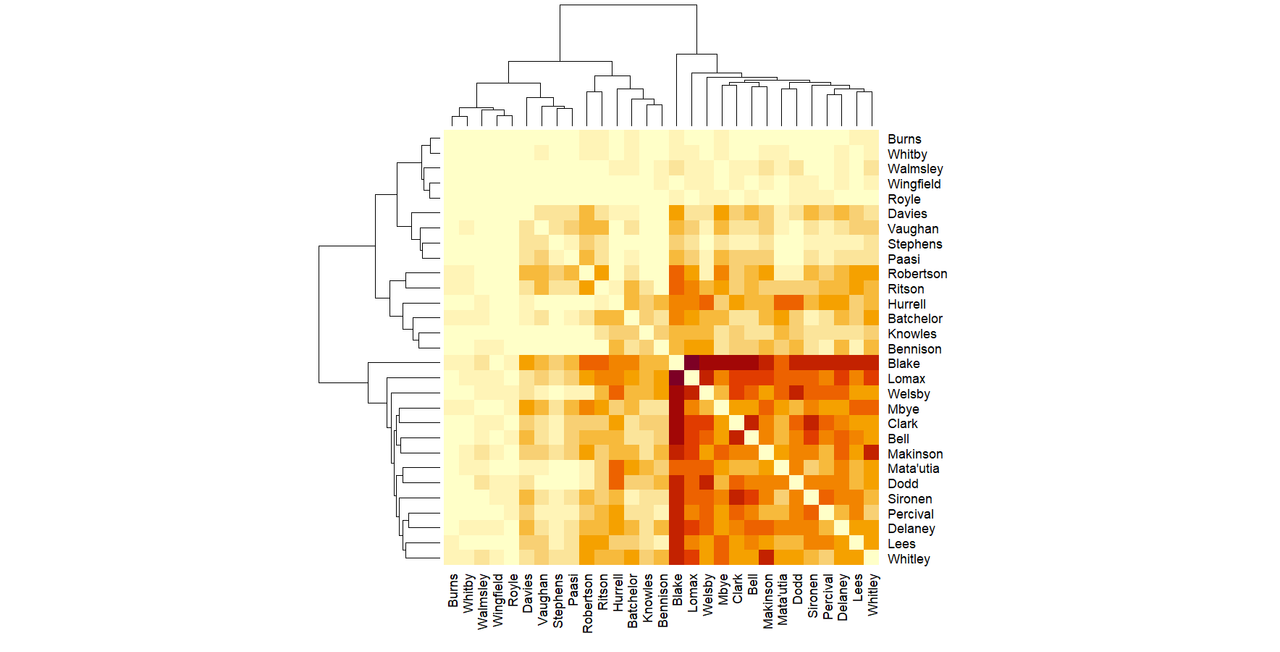
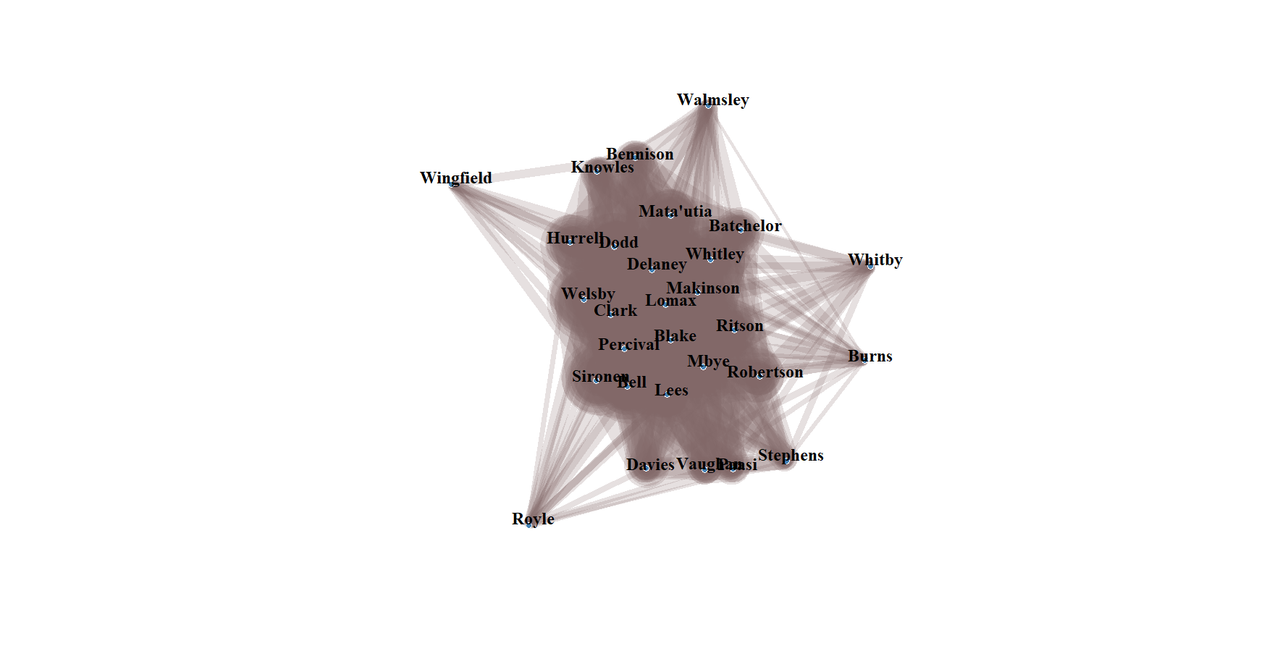
Monday, 16 June 2025
Formula 1 2025 - Canadian Grand Prix
In keeping with my previous rant about the cars being too wide for the tracks (https://fulltimesportsfan.wordpress.com/2025/04/16/formula-1-2025-japanese-grand-prix/), I present the 2025 Canadian Grand Prix as evidence. A Canadian Grand Prix where the most interesting thing is the tyre strategy is no kind of Canadian Grand Prix at all.
But, because of the unexpectedly high tyre wear, it was interesting. Well done to Ocon and Sainz jnr for making a single stop work out.I am still trying to understand Ferrari's strategy. On the other hand, I think that puts me in good company, which includes one of their drivers. I try not to rag on the strategy team, because this is a huge step up from the indecisive years, but ... exactly how was that strategy supposed to work. Was the intention long, long, short? Leclerc wasn't in a position to do anything useful with that strategy given where he qualified.
In other people whose race was compromised by qualifying - McLaren. I think that crash was McLaren's fault as much as it was Norris's. You have two drivers going for the world title and you let them race. Now, thankfully due to the other teams having cars that are not as good, there's no real damage done, except to Norris's title bid and probably his spirit. For what?
This is why I will never object to teams using team orders.
After the race, it was fascinating how differently Toto talked to his two drivers. Although, could Bono sound more like a proud Papa - so adorable. Antonelli on the radio afterwards - also adorable!!
Wednesday, 11 June 2025
Saints Ahoy - Game 25 and the 2024 season to date


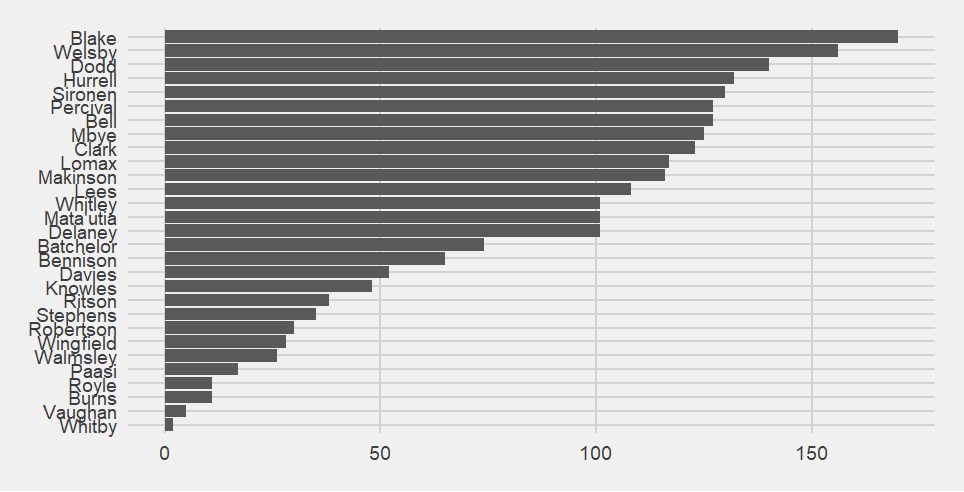
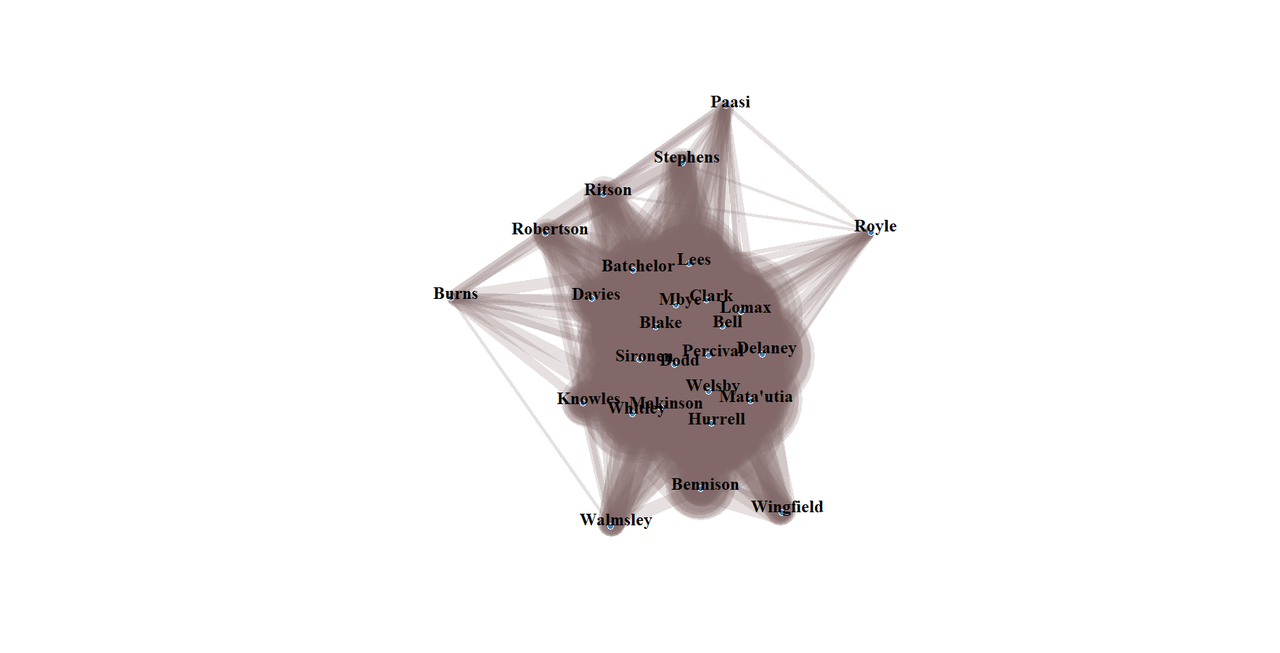

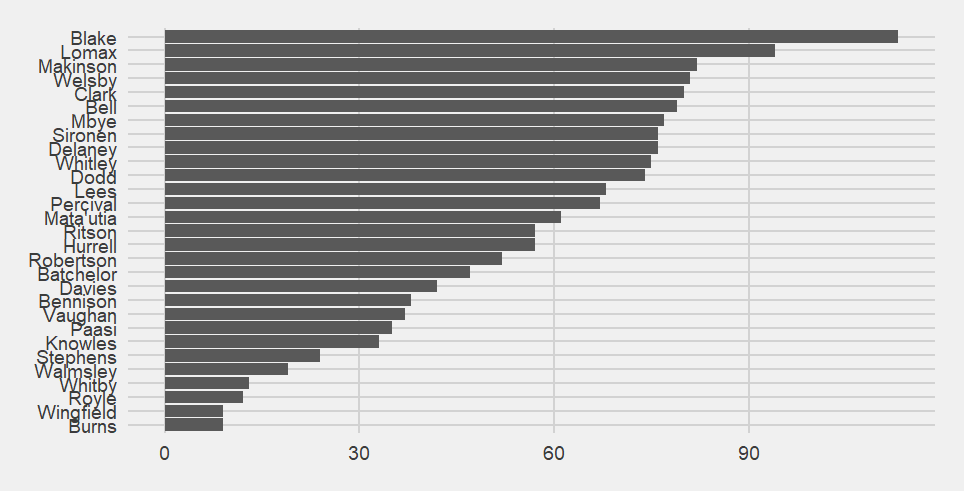
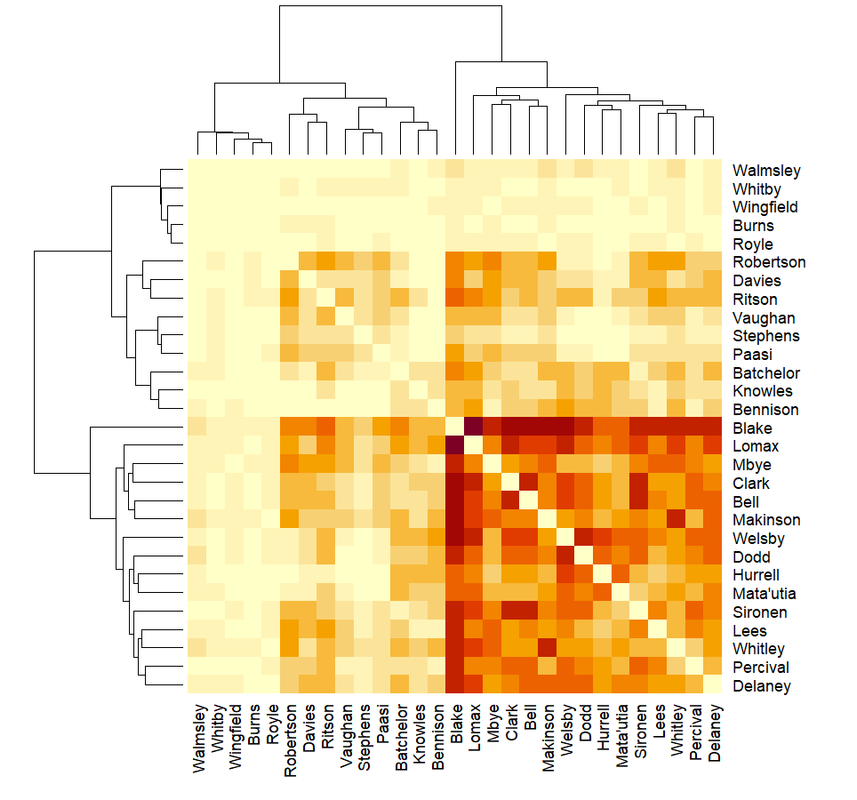
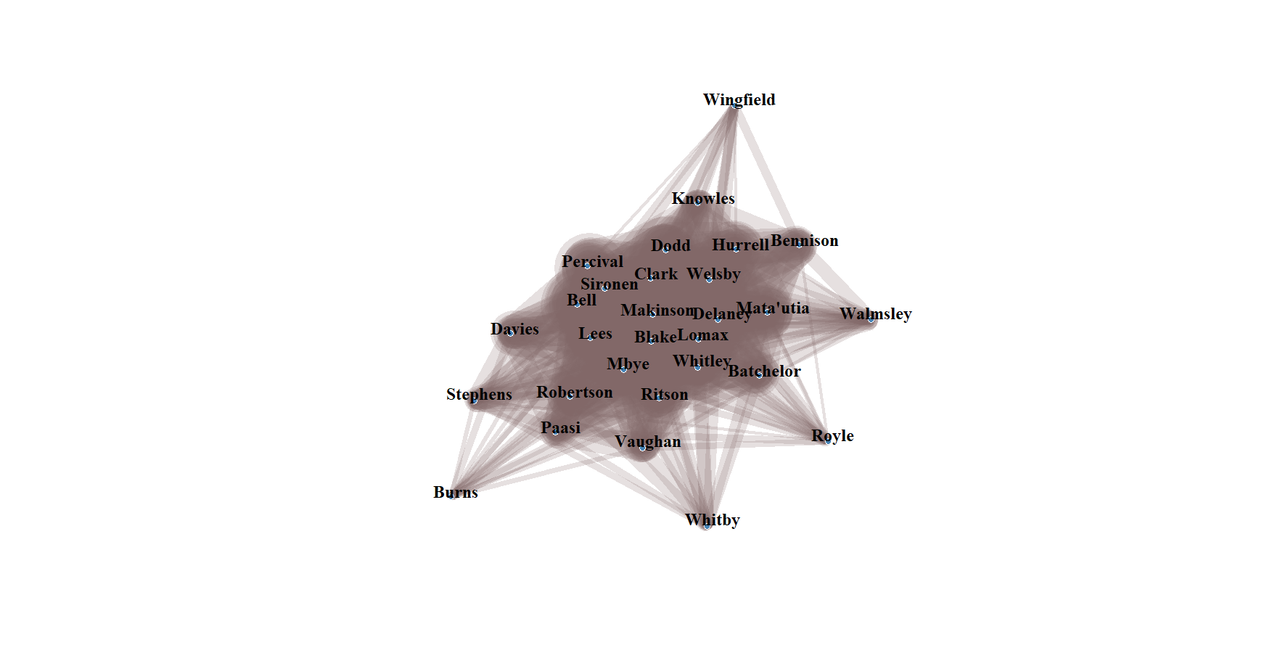
Saturday, 7 June 2025
Formula 1 2025 - Spanish Grand Prix
Saturday, 31 May 2025
Formula 1 2025 - Monaco Grand Prix - or "Williams did nothing wrong"
The race itself was pretty much dull as ditch water, even if part of me felt sympathy for Leclerc's "why always me" radio message about the timing of the virtual safety car. Why does it always happen at the worst possible time for him?
But it's Monaco, so nothing other than redesigning the cars so that they are smaller is ever going to make it an interesting race.And if they're going to add stupid rules, the teams, staffed as they are with over-grown hyper-intelligent schoolboys and girls, are going to bend and spindle those rules any way they can to get one over on the other teams and try to get points.
That's even more true of Williams who are one of the smaller teams (and why I have more sympathy for them than Mercedes or Racing Bulls).
Following an excellent performance in qualifying, they used a race strategy that guaranteed them points, in a sport where points = prize money.
Williams did nothing wrong!
Saturday, 24 May 2025
Saints Ahoy - Game 24 and the 2024 season to date
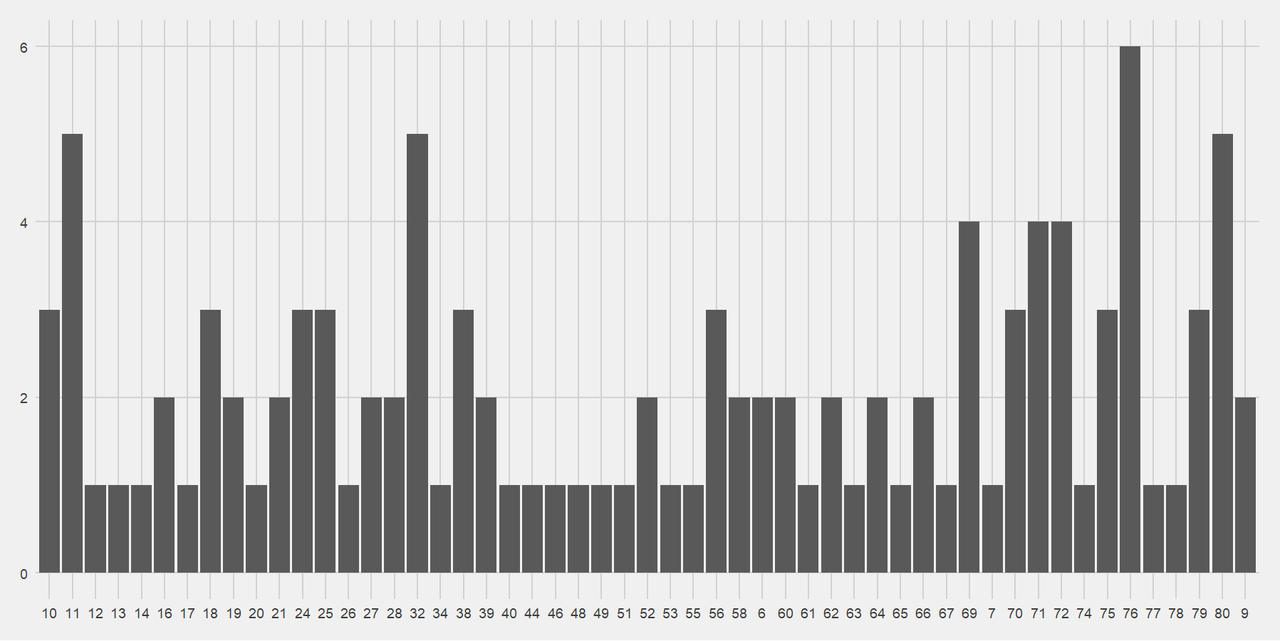
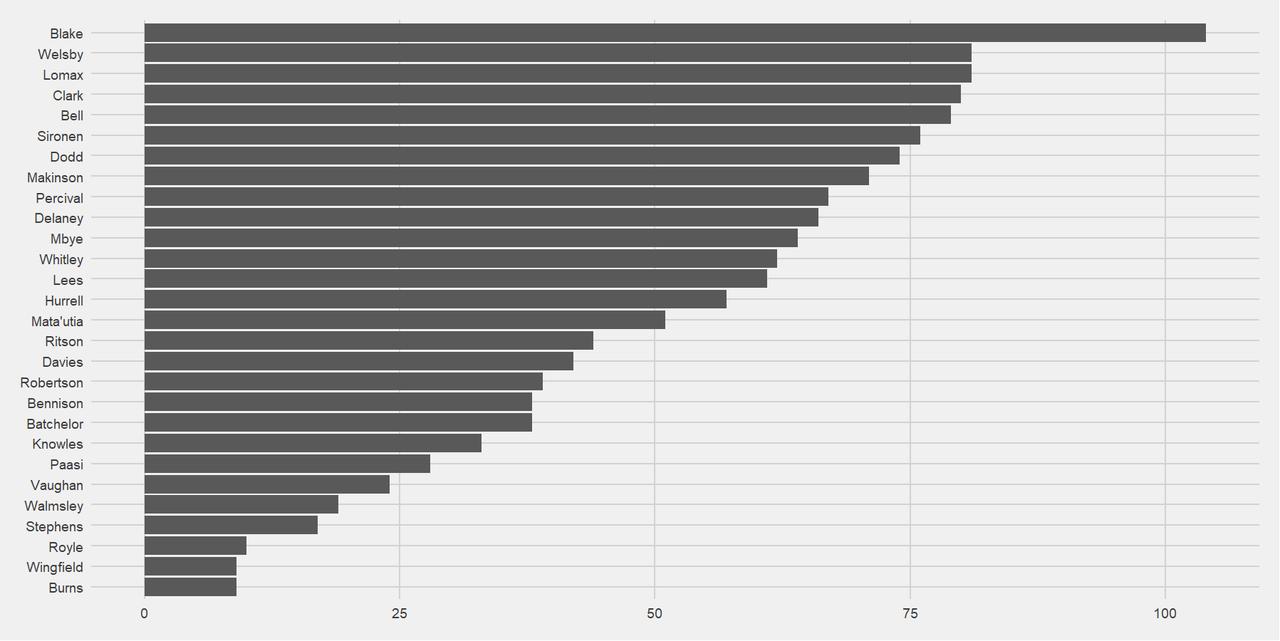
Saturday, 17 May 2025
Superman: the new one - some scattergun thoughts about comics, history and culture
Because L assures me that sometimes my post should be up to date and my film reviews are now running 5-6 years late.
I start with some caveats:
1 - in my comic book days, I was very much a Marvel girl. Make mine Marvel etc. The nearest I got to DC was Batman.
2 - James Gunn is one of those creative types who appears to have a direct line to my soul. He is responsible for an excessive amount of me crying in cinemas; somewhat famously, the time Guardians of the Galaxy made me cry so hard I gave L a migraine.
I have very little skin in this game (Superman) and I know that I will enjoy it anyway.
That being said, it's so nice to see a friendly Superman on screen.
I blame a mixture of Quentin Tarantino and the comics' Dark Age for the dour Supermen we have been having on the big screen recently (this applies to big screen only, the cartoons have been suitable).
Quentin Tarantino because of the whole which of Clark Kent's identities is the "real" one spiel, and everyone wanting to be an auteur like him and ape him in every possible way. (Said with affection for his films)
The Dark Age for that period of comics were everything had to be bleaker than bleak. And fellas, I understand the appeal, because those were the comics of my teenage years too. But they were a short blip in a long lifetime of the Superman character.
Superman is the best of us and happens to be an übermensch, not just an übermensch.
Wednesday, 14 May 2025
Formula 1 2025 - Miami Grand Prix
The title race is really hotting up (https://en.wikipedia.org/wiki/2025_Miami_Grand_Prix)
Shame Ferrari are nowhere near the pointy end for either championship. Instead, the drivers are busy taking potshots at each other and the team - https://www.bbc.co.uk/sport/formula1/articles/ce8g5xlmxjgoBoys, you get to do this when you're winning, not when you're languishing in 4th in the Constructors.
Sunday, 11 May 2025
An update on "Haaland or Bug?"
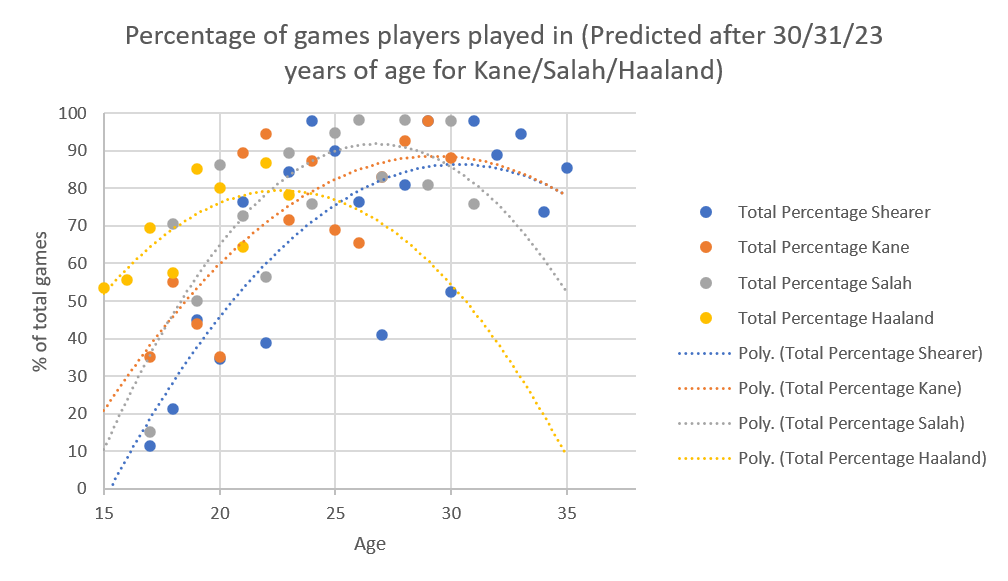 Next we have goals per game
It is still weird curves ahoy, because Kane and Shearer's are still upward-facing banana-shaped.
Next we have goals per game
It is still weird curves ahoy, because Kane and Shearer's are still upward-facing banana-shaped.
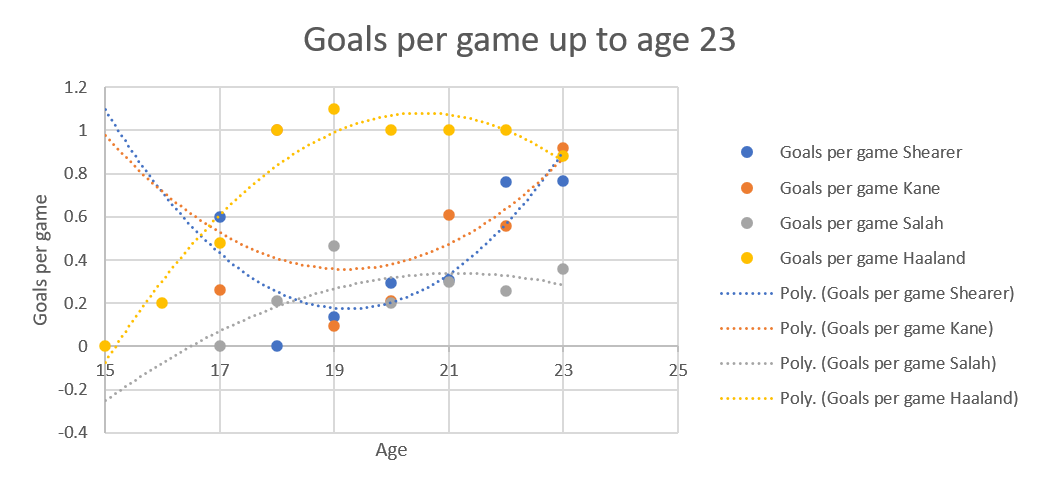 Haaland's downward facing parabola really is just due to other seasons being ridiculous and this one just being very good. I also find it amusing that three of the lines - Shearer's, Kane's and Haaland's - meet at more or less the same point. I think it's because they've always been out and out strikers, while Salah used to be a winger.
Haaland's downward facing parabola really is just due to other seasons being ridiculous and this one just being very good. I also find it amusing that three of the lines - Shearer's, Kane's and Haaland's - meet at more or less the same point. I think it's because they've always been out and out strikers, while Salah used to be a winger. 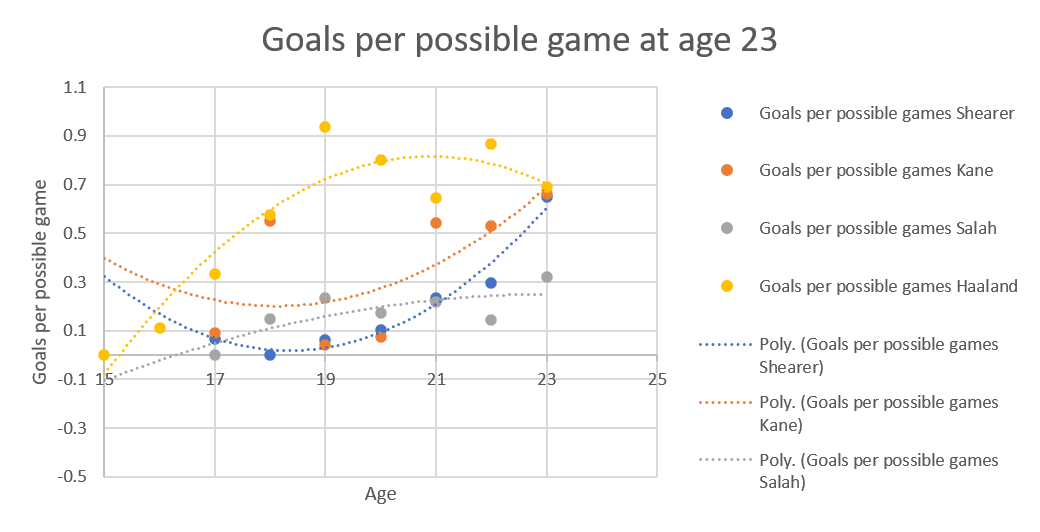
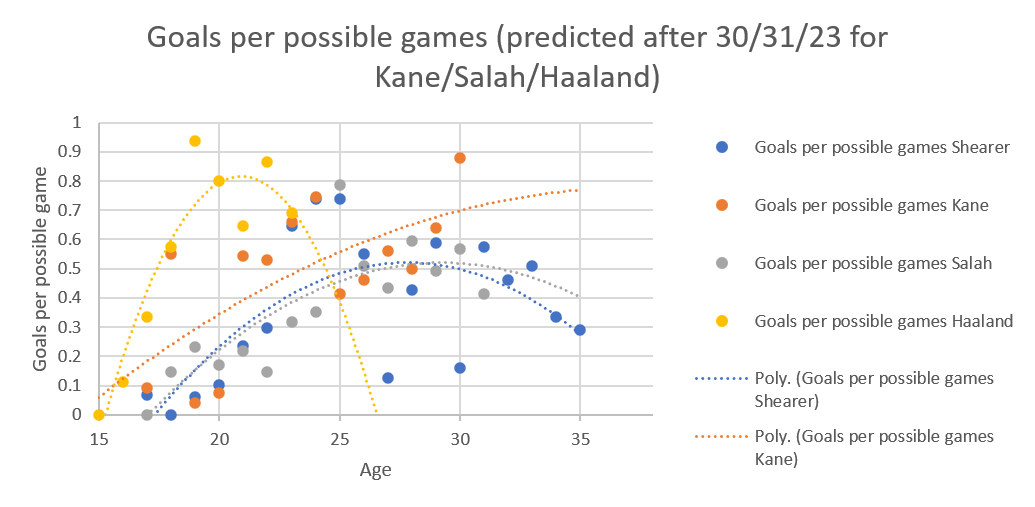 Manchester City, and therefore Haaland's relatively poor 2024-2025 is going to do things to my graphs again next time, isn't it?
Manchester City, and therefore Haaland's relatively poor 2024-2025 is going to do things to my graphs again next time, isn't it? 